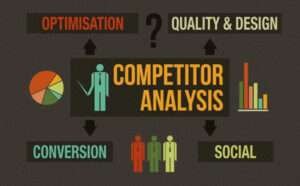
Decision-making is a crucial skill in both personal and professional contexts. Whether you’re navigating complex business challenges or making everyday choices, understanding and mastering the decision-making process can significantly impact your success. In this comprehensive guide, we will explore the eight essential steps in effective decision-making, offering practical insights and strategies to enhance your decision-making abilities.
1. Identify the Decision
Understanding the Decision at Hand
The first step in effective decision-making is to clearly identify the decision you need to make. This may seem straightforward, but it involves a deep understanding of the problem or situation. Clearly defining the problem sets the stage for a structured decision-making process.
Defining the Problem
Begin by asking yourself:
- What exactly am I deciding?
- Why is this decision important?
- What are the potential impacts of this decision?
For example, if you are considering a job change, your decision involves not only the choice to leave your current position but also the reasons driving this change, such as job dissatisfaction, better opportunities, or career growth.
Clarify Your Objectives
Understanding your objectives is critical. Are you seeking to improve your work-life balance, increase your income, or find a role that aligns more closely with your career goals? Clearly outlining these objectives helps in assessing the options more effectively.
2. Gather Information
The Importance of Data Collection
To make an informed decision, it’s crucial to gather as much relevant information as possible. This involves researching the issue, collecting data, and seeking advice if necessary. The quality of your decision depends on the accuracy and comprehensiveness of the information you have.
Research and Data Collection
Consider the following methods for gathering information:
- Secondary Research: Review existing reports, articles, and studies related to your decision.
- Primary Research: Conduct surveys, interviews, or experiments to gather firsthand data.
- Expert Consultation: Seek advice from individuals with expertise in the relevant field.
Evaluating Sources
Ensure that your sources are credible and relevant. Cross-check information to avoid biases or inaccuracies. Reliable data will form the foundation of a solid decision-making process.
3. Define Your Criteria
Establishing Decision-Making Criteria
Once you have gathered information, the next step is to define the criteria that will guide your decision. These criteria act as benchmarks for evaluating your options and ensuring that they align with your goals and values.
Identifying Key Factors
Determine what factors are most important to you. For instance, if you are choosing between job offers, your criteria might include:
- Salary and Benefits: Financial compensation and perks.
- Job Satisfaction: Alignment with your interests and skills.
- Location: Proximity to home and convenience.
- Work-Life Balance: Flexibility and personal time.
Prioritizing Criteria
Not all criteria are of equal importance. Rank them according to their significance. This prioritization will help you focus on what matters most when evaluating options.
4. Generate Options
Exploring a Range of Possibilities
With clear criteria in place, the next step is to generate a variety of potential options. This phase is about creativity and exploration. The more options you have, the better your chances of finding an optimal solution.
Brainstorming Techniques
Use brainstorming techniques to explore possibilities:
- Mind Mapping: Visualize different options and their interconnections.
- SWOT Analysis: Assess the strengths, weaknesses, opportunities, and threats of each option.
- Reverse Brainstorming: Consider how you might achieve the opposite outcome and then reverse engineer viable solutions.
Encouraging Creativity
Don’t limit yourself to conventional solutions. Sometimes, unconventional ideas can lead to innovative and effective outcomes. Encourage open-mindedness and consider a wide range of possibilities.
5. Evaluate Options
Assessing Each Option Against Your Criteria
Once you have generated options, it’s time to evaluate each one based on your predefined criteria. This step involves a detailed analysis of the potential outcomes of each option.
Pros and Cons Analysis
For each option, create a list of pros and cons. Consider factors such as:
- Feasibility: Is the option practical and achievable?
- Impact: What are the short-term and long-term effects?
- Alignment: Does it align with your goals and values?
Decision Matrix
A decision matrix can help in systematically comparing options. Assign scores to each option based on how well it meets each criterion and weigh these scores according to the importance of each criterion.
6. Make a Choice
Trusting Your Judgment
After evaluating your options, the next step is to make a decision. This is where you rely on your judgment and intuition, informed by the analysis you’ve conducted.
Avoiding Analysis Paralysis
It’s easy to get stuck in over-analysis, especially with complex decisions. Set a deadline for making your choice to avoid procrastination. Trust your research and evaluation process to guide you.
Commitment to the Decision
Once you make a choice, commit to it. Indecision or second-guessing can undermine your confidence and effectiveness. Embrace your decision with confidence and focus on the next steps.
7. Take Action
Implementing Your Decision
With your decision made, the next step is to develop and execute an action plan. This phase requires practical planning and organization.
Action Plan Development
Outline the specific steps required to implement your decision. Include:
- Tasks: What needs to be done?
- Resources: What resources are needed (time, money, personnel)?
- Timeline: When will each task be completed?
Execution and Monitoring
Put your plan into action and monitor progress regularly. Be prepared to make adjustments if needed. Effective execution is crucial for achieving the desired outcomes.
8. Review and Learn
Evaluating the Outcomes
After implementing your decision, it’s important to review and evaluate the results. Assess whether the decision achieved the desired outcomes and reflect on the process.
Reflection and Feedback
Consider the following questions:
- Did the decision meet your expectations?
- What worked well and what didn’t?
- What could you improve in future decision-making processes?
Continuous Improvement
Use the insights gained from the review to refine your decision-making skills. Each decision, whether successful or not, is an opportunity to learn and improve. Apply these lessons to enhance your future decision-making capabilities.
Conclusion
Effective decision-making is a critical skill that impacts all aspects of life. By following these eight essential steps—identifying the decision, gathering information, defining criteria, generating options, evaluating options, making a choice, taking action, and reviewing and learning—you can approach decisions with greater clarity and confidence. Remember, decision-making is an iterative process. As you practice and gain experience, your ability to make sound decisions will continue to improve.

















































